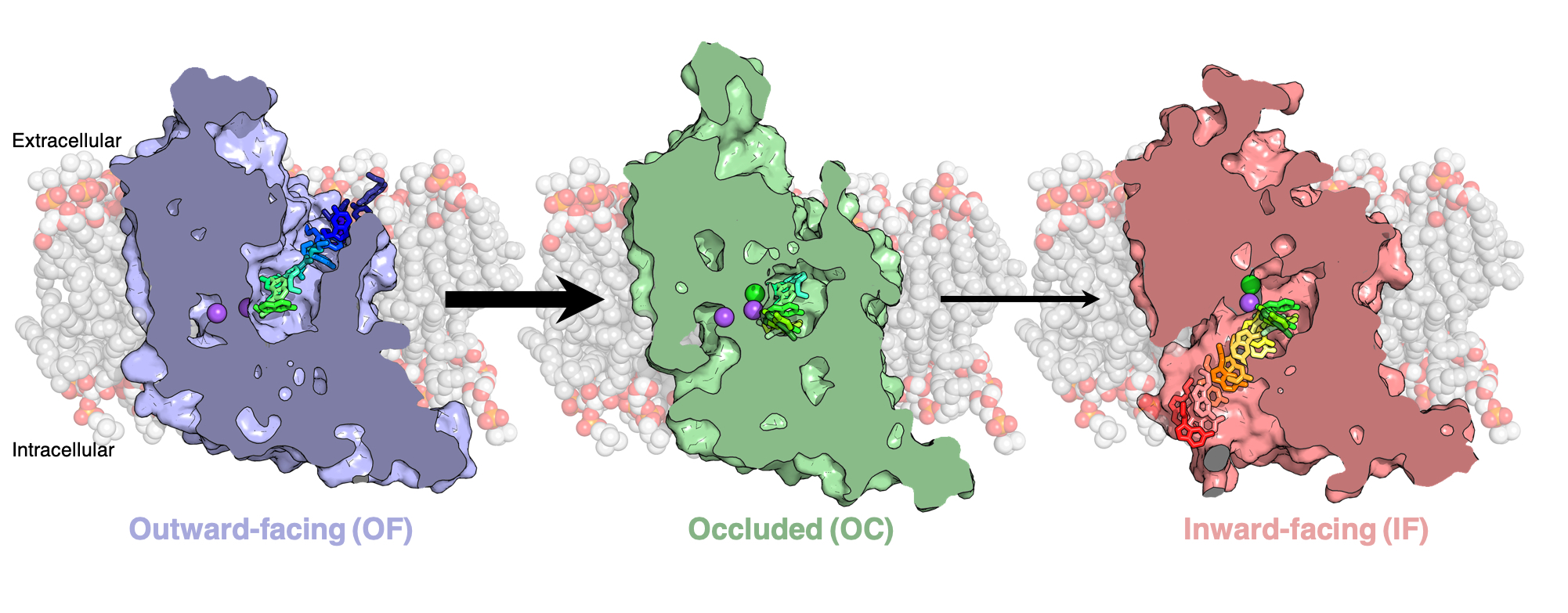Substrate Import Mechanism of the Human Serotonin Transporter
Matthew C. Chan*, Balaji Selvam*, Heather J. Young, Erik Procko, Diwakar Shukla, Biophysical Journal, 121(5), 715-730, (2022). DOI

Abstract
The flux of ions and molecules in and out of the cell is vital for maintaining the basis of various biological processes. The permeation of substrates across the cellular membrane is mediated through the function of specialized integral membrane proteins commonly known as membrane transporters. These proteins undergo a series of structural rearrangements that allow a primary substrate binding site to be accessed from either side of the membrane at a given time. Structural insights provided by experimentally resolved structures of membrane transporters have aided in the biophysical characterization of these important molecular drug targets. However, characterizing the transitions between conformational states remains challenging to achieve both experimentally and computationally. Though molecular dynamics simulations are a powerful approach to provide atomistic resolution of protein dynamics, a recurring challenge is its ability to efficiently obtain relevant timescales of large conformational transitions as exhibited in transporters. One approach to overcome this difficulty is to adaptively guide the simulation to favor exploration of the conformational landscape, otherwise known as adaptive sampling. Furthermore, such sampling is greatly benefited by the statistical analysis of Markov state models. Historically, the use of Markov state models has been effective in quantifying slow dynamics or long timescale behaviors such as protein folding. Here, we review recent implementations of adaptive sampling and Markov state models to not only address current limitations of molecular dynamics simulations, but to also highlight how Markov state modeling can be applied to investigate the structure-function mechanisms of large, complex membrane transporters.